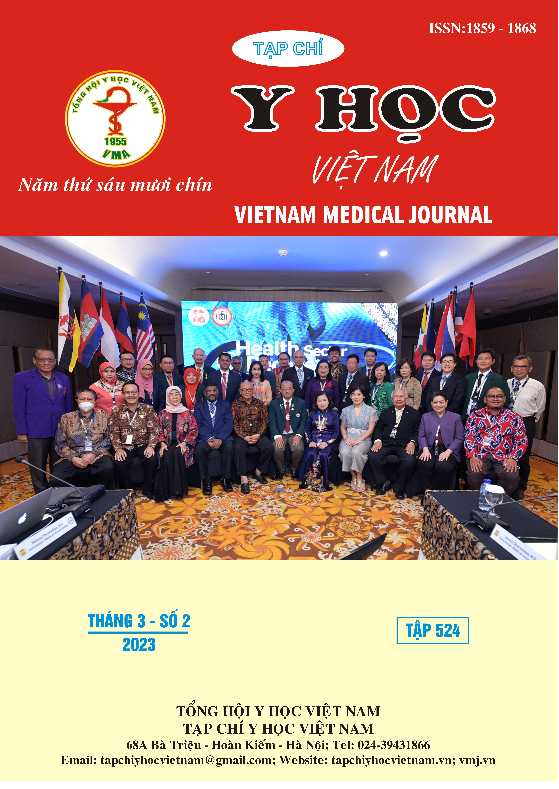PREOPERATIVE EMBOLIZATION TREATMENT FOR HYPERVASCULARITY TUMOR OF THE HEAD AND NECK REGION
Main Article Content
Abstract
Objectives: to report the imediated results of pre-operative embolization the hyper vascular tumors at the head and neck region. Materials and methods: 22 patients including juvenile nasopharyngeal angiofibroma, carotid body tumor, metastasis and mandibular tumor were undergone embolization for operated resection. Results: nearly and total occlusion of feeding vessels archived in 100% patients with embolic material included particles, glue and coil. Angiographic feature showed hyper vascular within the tumors in both arterial and venous phase. There was one patient with pseudo aneurysm and one other with arteriovenous fistular in the tumor. 100% feeding arteries come from external carotid artery while 2 patients had additional supply from internal carotid artery. No major complication was encountered. There were minor complication including pain after procedure (n=5), facial swelling (n=3). Conclusion: pre-operative embolization for the hyper vascular tumor at the head and neck region is safe and effective method that should be applied 1 – 3 day before operation.
Article Details
Keywords
juvenile nasopharyngeal angiofibroma, pre-operative embolization
References
2. M. A. Lazzaro, A. Badruddin, O. O. Zaidat, Z. Darkhabani, D. J. Pandya, and J. R. Lynch, ‘Endovascular Embolization of Head and Neck Tumors’, Front. Neurol., vol. 2, p. 64, Oct. 2011, doi: 10.3389/fneur.2011.00064.
3. S. Abu-Ghanem, M. Yehuda, N. N. Carmel, A. Abergel, and D. M. Fliss, ‘Impact of preoperative embolization on the outcomes of carotid body tumor surgery: A meta-analysis and review of the literature’, Head Neck, vol. 38 Suppl 1, pp. E2386-2394, Apr. 2016, doi: 10.1002/hed.24381.
4. P. Texakalidis et al., ‘Role of Preoperative Embolization in Carotid Body Tumor Surgery: A Systematic Review and Meta-Analysis’, World Neurosurg., vol. 129, pp. 503-513.e2, Sep. 2019, doi: 10.1016/j.wneu.2019.05.209.
5. A. Helal et al., ‘Preoperative embolization of jugular paraganglioma tumors using particles is safe and effective’, Interv. Neuroradiol., vol. 28, no. 2, pp. 145–151, Apr. 2022, doi: 10.1177/15910199211019175.
6. S. Geibprasert, S. Pongpech, D. Armstrong, and T. Krings, ‘Dangerous Extracranial–Intracranial Anastomoses and Supply to the Cranial Nerves: Vessels the Neurointerventionalist Needs to Know’, Am. J. Neuroradiol., vol. 30, no. 8, pp. 1459–1468, Sep. 2009, doi: 10.3174/ajnr.A1500.
7. M. Charlick and J. M. Das, Anatomy, Head and Neck, Internal Carotid Arteries. StatPearls Publishing, 2021. Accessed: Aug. 24, 2022. [Online]. Available: https://www.ncbi.nlm.nih.gov/books/NBK556061/
8. ‘Carotid artery: Anatomy, function, disease, and more’. https://www.medicalnewstoday.com/articles/carotid-artery (accessed Aug. 24, 2022).
9. ‘Frontiers | Endovascular embolization of head and neck tumors’. https://www.frontiersin.org/articles/10.3389/fneur.2011.00064/full (accessed Aug. 24, 2022).


